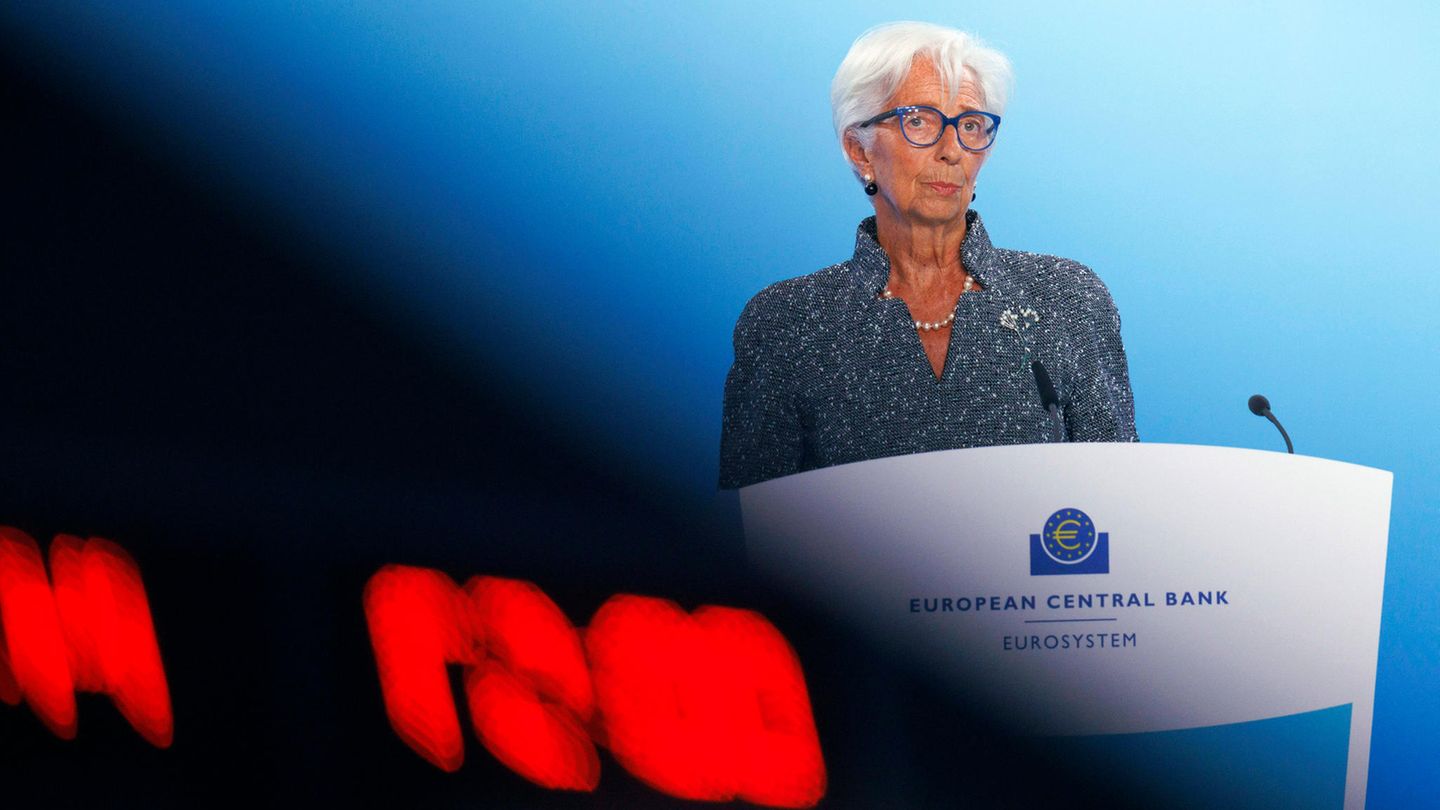The ECB is cutting key interest rates for the third time this year. The key interest rate now falls to 3.25 percent. This is bad news for savers.
There was no surprise: the European Central Bank is cutting the relevant interest rates by 25 basis points – as almost all analysts had previously predicted. The deposit interest rate, which is important for banks, will now be 3.25 percent and is already 75 basis points below its high of four percent, which was in effect until the beginning of June. The actual key interest rate, the so-called main refinancing rate, which banks pay when they borrow money from the ECB, falls from 3.65 to 3.40 percent. This is ultimately more important for borrowers than the deposit interest rate.
This is original Capital branded content. This article is available for ten days on stern.de. You will then find it again exclusively on capital.de. Capital belongs like that star to RTL Germany.
ECB boss Christine Lagarde is reacting to the latest data on inflation and the economy. The increase in the harmonized consumer price index in Europe, which the ECB is guided by, slowed to 1.8 percent in September over the year. The inflation rate has therefore fallen to its lowest level since summer 2021. This means it is below the central bank’s inflation target of 2.0 percent – if it weren’t for the so-called core inflation. This rate, adjusted for volatile energy and food prices, is still above the target at 2.7 percent, which is why the ECB is continuing to put the brakes on.
Lagarde said in the Slovenian capital Ljubljana that “we are on track to combat inflation.” The current inflation and its dynamics give cause for hope, which shows that monetary policy has worked. Lagarde also pointed out that inflation would rise again at the end of the year. The reason for this is base effects.
Lagarde also focused on the weak economy in the euro area. It was another reason for the interest rate cuts. In particular, the German economy, which was the driving force in the euro zone for a long time, is not gaining momentum. The purchasing managers’ index for German industry fell again last month and is now at 40.6 points, the lowest it has been since September 2023 – at a time that is not overshadowed by external crises. But growth is also weak across Europe: it averaged just 0.2 percent in the second quarter.
Analysts hardly surprised by ECB
“The rapid third rate cut since June is in line with the general data. The euro inflation rate has fallen below two percent and growth forecasts have fallen. The decline in inflation would cause real interest rates to rise if interest rates remained constant. That would be wrong in terms of economic policy. Therefore, this interest rate cut is well justified in terms of monetary policy,” explained ZEW economist Friedrich Heinemann.
“The ECB is slightly increasing the pace of interest rate cuts. In doing so, it pays tribute to the disappointing economic development in the euro area and Germany. “But it is more of a precautionary step than an urgent necessity,” said Ulrich Kater, chief economist at Deka.
What is the outlook?
The crucial question for many analysts was rather what outlook ECB boss Christine Lagarde would give for interest rates. The broad market expected further interest rate cuts in a corridor between 2.0 and 2.5 percent in the next twelve months. That would probably be at least three interest rate hikes, one of which could take place this year.
Lagarde curbed expectations in this regard. She will not chart an interest rate path, explained Lagarde. “We will remain restrictive for as long as necessary to achieve our inflation target.” Ultimately, the ECB President only repeated what she has been saying like a prayer wheel for many months: that the ECB will make decisions “depending on data”, from meeting to meeting .
This is what numerous analysts had previously predicted, including those from Pimco and Vanguard. What they read from the data and statements is that the future interest rate path is becoming more predictable. “The overall picture of inflation and the economy remains the same and with it the further interest rate path, which will see easing on a quarterly basis from December onwards. “Lending conditions, for example for mortgage loans, are unlikely to fall since they have already anticipated developments in key interest rates months in advance,” says Deka economist Ulrich Kater.
Banks and insurers want a break in interest rates
Depending on which corner you look at, expectations of the ECB vary. The banking association BDB, for example, is calling for a pause in interest rate cuts – probably also because banks benefit from higher interest rates. Something similar can be heard from the insurance association GDV, whose managing director Jörg Asmussen warns of a possible escalation in the Middle East and high service prices.
On the other hand, Sebastian Dullien from the union-affiliated IMK Institute points out the high need for investment, which the ECB is suppressing through its continued restrictive monetary policy. “Monetary policy is thus preventing urgently needed investments in decarbonization as well as product and process innovations that companies need to survive in international competition.”
Markets hardly interested
The stock markets initially reacted little to slightly positively to the interest rate cut – probably also because they had largely priced it in. After the announcement, the Dax climbed by 0.2 percent, the French CAC 40 by 0.18 percent.
Source: Stern




